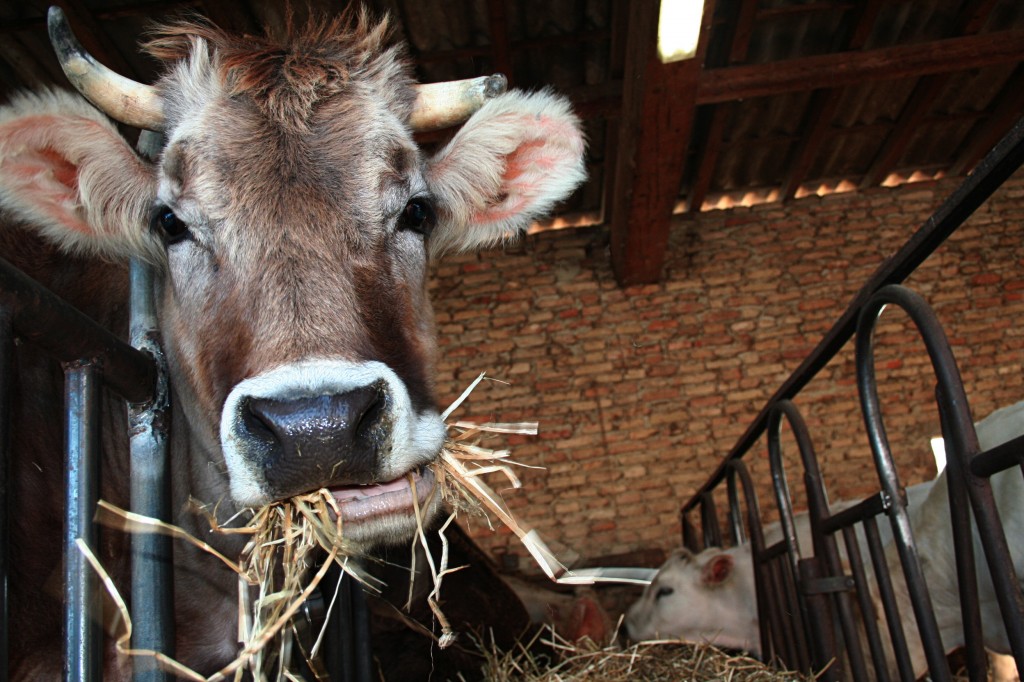A land between frontiers and mountains
Bordered to the north with Switzerland, to the west with France and to the south with Piemonte, it is situated in the heart of the Alps. The single province, Aosta is Italy’s smallest region. On a contour map, the entrance to the valley, coming from Ivrea, is at Verrés. Verrés has a castle on a promontory overlooking the Evacon river which pours into the Dora Baltea whose source is on Monte Bianco.
Following the Dora Baltea uphill we arrive at Saint Vincent, famous for its thermal waters and its casino. The houses are very characteristic Aosta valley architecture. In Verrés, we can visit an interesting 16th century “grangia” — housing and administrative quarters where the church governed and raised money from the land.
From Saint Vincent we reach Aosta, the capital of the province. Aosta was founded in 25 B.C. by the emperor Augustus, who conquered the native Salassi people. The Augustus arch was built to commemorate this victory. In the heart of Aosta is Piazza Chanoux which merits a leisurely stroll and aperitivo. The undisputed queen of the table is Fontina cheese, eaten out of hand or with polenta. Fontina is made from cow milk rich in vitamins, to which nothing is added or removed: it is neither skimmed or pasteurized. The climate and environment are perfect here for producing this unique cheese. Fontina symbolizes the Aosto valley and the mountain version is a difficult cheese to make well. It is produced from whole, raw milk of the local breed of cow. Production begins within tow hours of milking. Rennet from calf milk is used to curdle it, happening within one hour. It is heated to 47-49 * C and the curd is then put into the cheese mold, which will give it shape, and it is pressed to remove the whey. After 12 hours, it is removed from the mold and the color is ivory to light yellow.
The cheese is seasoned in grottos carved out of the rock where the temperature and humidity is ideal to allow it to mature naturally. Fontina do, however, require constant care: they are turned daily and salted and brushed on alternate days. The brushing prevents mold from forming on the skin while allowing it to stay slightly moist. Average maturation is three months. The most sumptuous way to eat Fontina is in a fondue. Served hot, from a terracotta bowl into which we dip little chunks of bread. Because it melts so easily and uniformly it also makes a bowl of polenta creamy, rich and delicious.
The other local cheese is Fromadzo. Valle d’Aosta Fromadzo DOP is prepared from at least two separate cow milkings to which a small amount of goat milk is sometimes added. A part-skim cheese, it is an alternative to the richer Fontina. It is semi-sweet when it is fresh and becomes stronger and slightly saltier when it is more mature.
The output of wines is quantitatively insignificant, but it is growing in zones where other activities are difficult. The wines are rarely seen outside the region. There is interesting quality here and the most important winemaker is a school – Institut Agricole.
Now we head north along the Via Francigena to the Gran San Bernardo Pass which we can see from the little town of Etroubles. Etroubles is a medieval fairy-tale of a town with cobbled streets, splendid fountains spouting fresh clean water and a 15th century bell tower chiming on the hour.
A bit to the east we are at the foot of Cervino, a mountain town par excellence; with its enormous base firmly attached to the ground and its peak so far far away, nearer to the sky than the earth. Remaining on the slopes of the Alps and going east a bit further,we arrive at the foot Monte Rosa. We are in the land of the famous Toma di Gressoney, a typical mountain pasture cheese, good when it is fresh and soft, excellent when it has matured for three months (or, up to 18 months), delighting the palate with a peppery vanilla taste.
Heading south east we arrive in Alpi Graie, at the foot of Gran Paradiso or, travel further to the famous and charming Courmeyer. Valle D’Aosta will remain in your heart; a region where mountains reign and dictate the pace and way of life.

